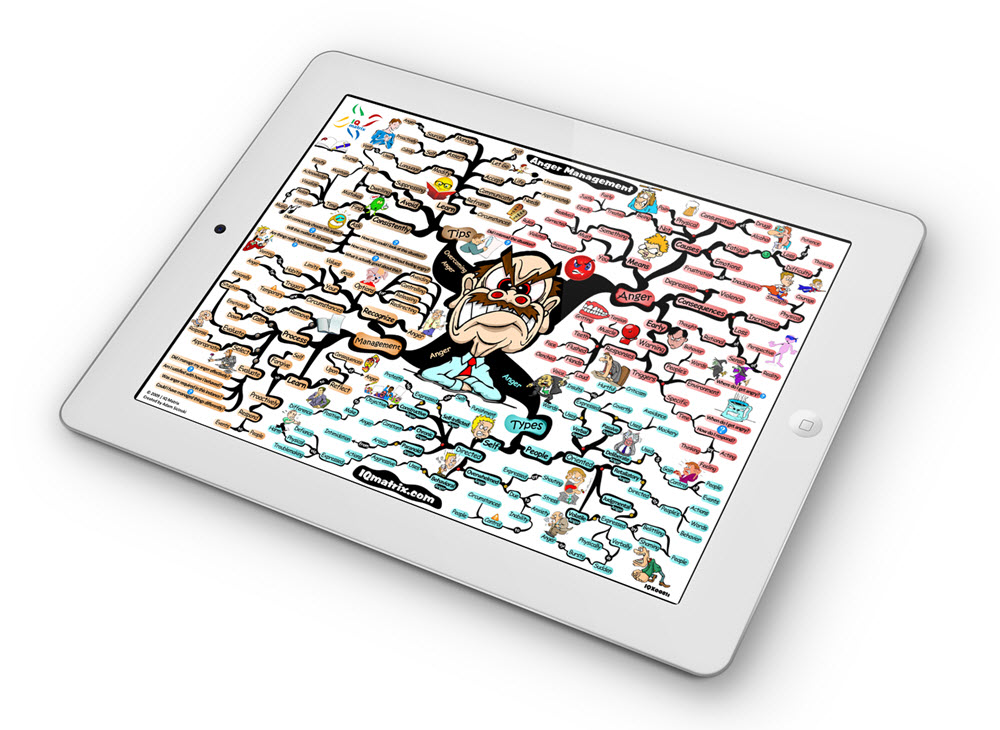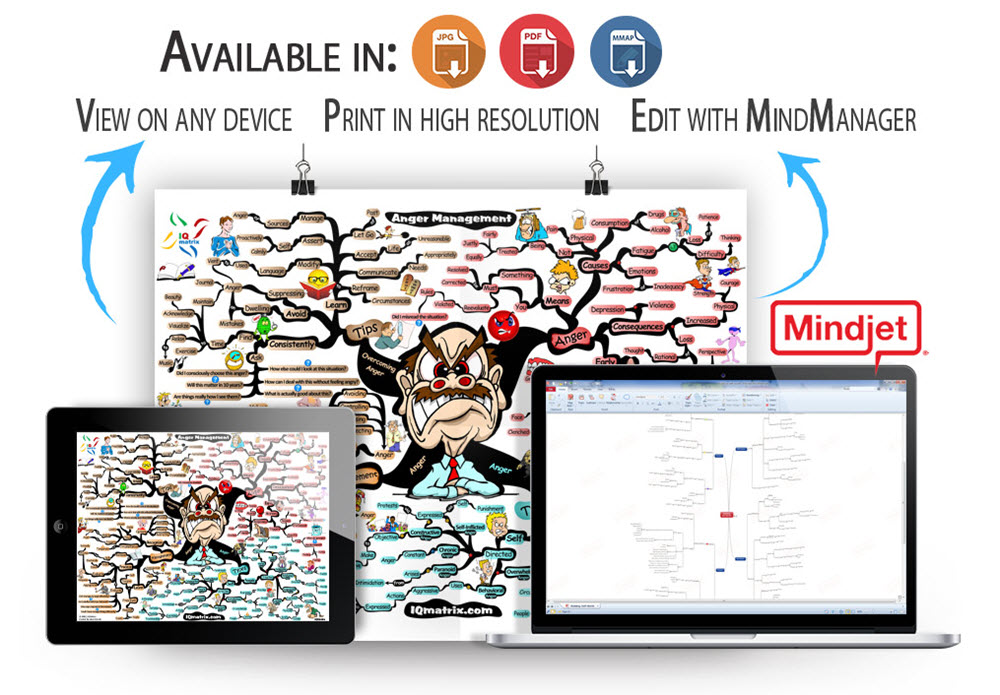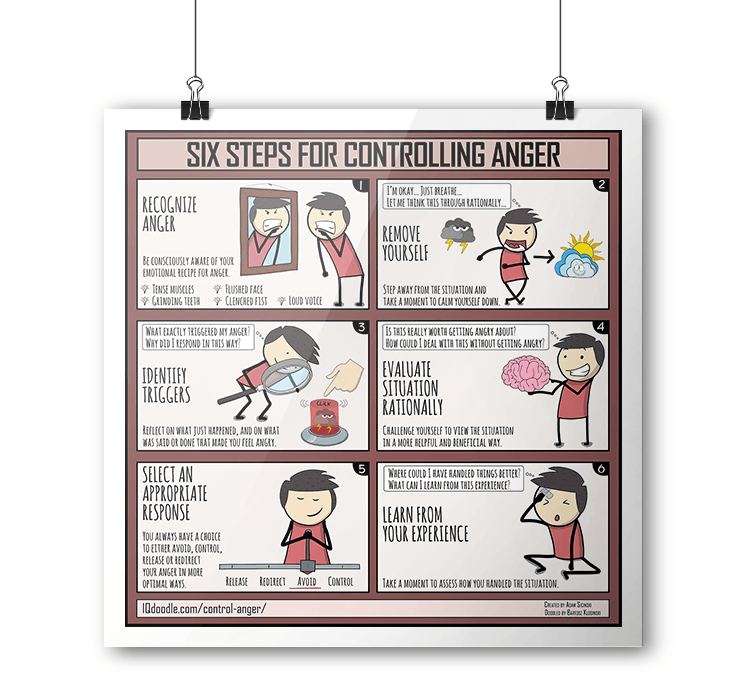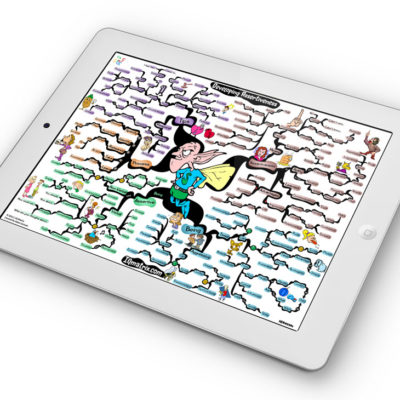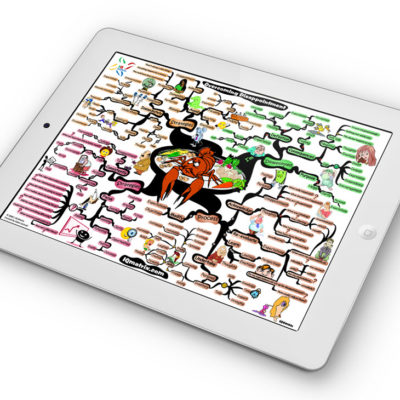The Anger Management IQ Matrix explores how to manage your anger in optimal ways. At one point or another, we’ve all experienced some form of anger where we lose control of our emotions and end up saying and doing things that we later regret. Anger is very much a natural response that can help you to better understand yourself, your rules, your expectations, and your personal standards. In fact, when you’re feeling angry, it’s telling you that something must be corrected or resolved.
You can make these corrections and resolve the issues you are confronting, or you can choose to let things go. Either approach works. It just all depends on what you would like to gain from the situation. This map will help you to work through your anger by showing you how to avoid, control, release, redirect, or reframe your feelings in optimal ways.
Here is a quick breakdown of each branch of the Anger Management mind map.
- Understanding Anger: The first branch of this map explores what it means to feel angry. It also outlines the causes, consequences, and the early warning signals that tend to trigger anger.
- Anger Types: The second branch of this map outlines the six people-oriented and the six self-oriented types of anger that affect us throughout our lives. The people-oriented anger types include (1) Verbal Anger, (2) Passive Anger, (3) Deliberate Anger, (4) Retaliatory Anger, (5) Judgmental Anger, and (6) Volatile Anger. The self-oriented anger types include (1) Overwhelmed Anger, (2) Behavioral Anger, (3) Paranoid Anger, (4) Chronic Anger, (5) Constructive Anger, and (6) Self-Inflicted Anger. Understanding each type of anger can help you to address and work through them far more effectively.
- Anger Management: The fourth branch of this map uncovers how the power of recognition can transform the impact that anger has on your life. The branch also breaks down a five-step process you can use to manage your anger far more effectively. The steps of this process include (1) removing yourself from the situation, (2) taking time to calm your emotions down, (3) evaluating situation rationally, (4) selecting an appropriate response, (5) learning from the experience.
- Overcoming Your Anger: The final branch of this map outlines several guidelines to help you manage anger far more effectively throughout the day. It also lists down several questions you can ask yourself that will help you reframe your anger in optimal and self-supporting ways.
This map provides a roadmap and framework for managing your anger throughout the day. Referencing it regularly and committing it to memory will help you to embed these concepts and ideas into your subconscious mind.
A mind map, of course, does this beautifully because it mirrors the synaptic connections made in your brain as you try to establish new habits of thought and behavior. It brings together key concepts and ideas that help your brain to fully integrate and process this information. The brain, subsequently, rewires itself as it attempts to establish new habits of mind. It’s an ideal tool for creating lasting change and transformation.
Stick with these principles, memorize and incorporate them into your life, and you will progressively learn to avoid, control, release, redirect and reframe the meaning of your anger far more effectively throughout the day.
When you purchase the Anger Management IQ Matrix you will receive:
- A PDF copy of the IQ Matrix, which you can use for printing in high resolution.
- A JPG image file of the IQ Matrix, which is ideal for viewing on tablets and mobile devices.
- A Desktop Background version of the map you can use for reference on your computer.
- A MindManager file for those who wish to edit the content of the IQ Matrix.
- A printable PDF summary of this IQ Matrix to help you better understand each concept.
- A bonus IQ Doodle that summarizes key ideas presented within this IQ Matrix. To purchase the full IQ Doodle pack bundle, please visit the IQ Doodle Store.
Additional visual resources and variations of this IQ Matrix might be added to your account page at no extra cost in the future.

